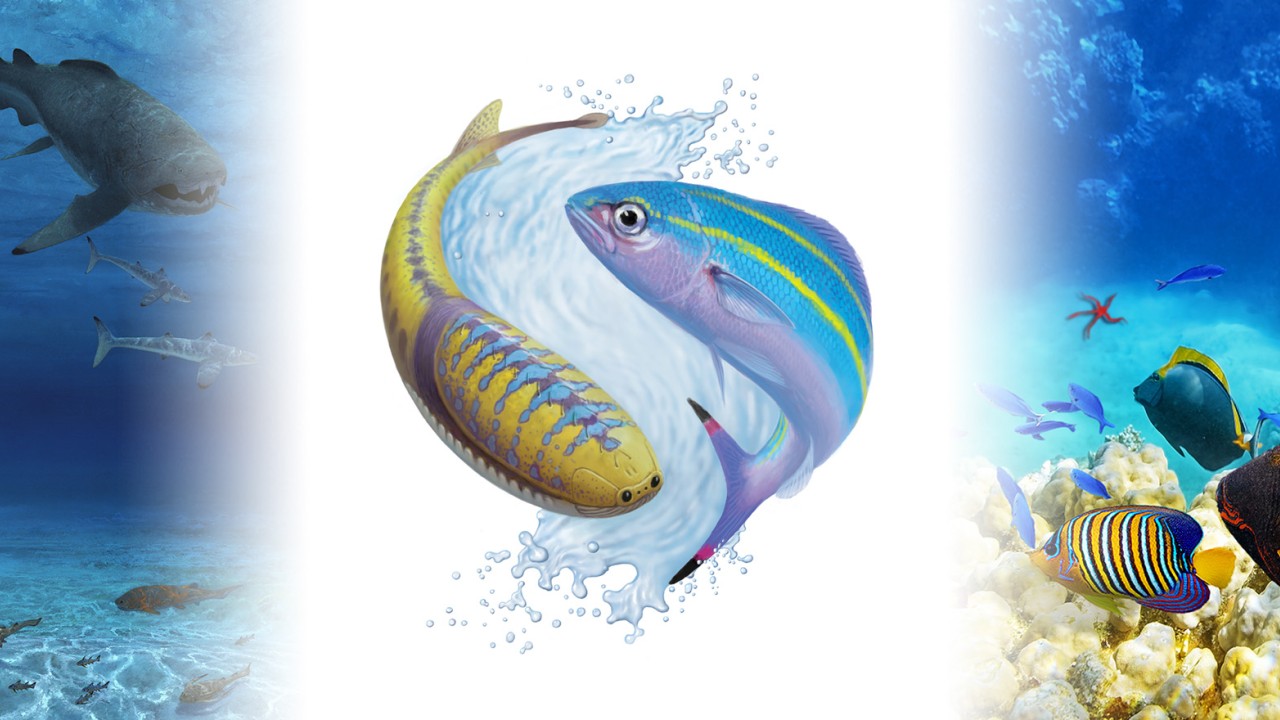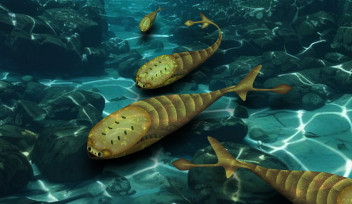Macroevolution Unit

Macroevolution Unit
The Macroevolution Unit (PI: Lauren Sallan) is a theory-driven research group focused on explaining how biological diversity is structured across space and time.
In this lab, we are developing what we call the Diversity–Reset Framework, a unifying macroevolutionary model that formalizes ecological saturation, extinction-driven turnover, and functional constraint into a single explanatory complex system. This system integrates ecological interactions, physical constraints, historical contingency, and the emergence of novel features as co-drivers of large-scale evolutionary structure.
Rather than viewing evolution as a steady accumulation of novelty, this framework emphasizes recurring cycles of ecological filling, disruption, and reorganization. These cycles shape long-term patterns in biodiversity, body plans, and ecological strategies across diverse ecosystems and clades and over hundreds of millions of years.
Macroevolution refers to evolution above the level of populations and species: the origin, diversification, and extinction of lineages; the construction of ecosystems; and long-term patterns in diversity and form across deep time.
Our lab uses fishes as a primary model system, not as an endpoint, but as a mechanism-rich window into general evolutionary dynamics. Hydrodynamics and biomechanics tightly couple form, performance, and ecology in aquatic vertebrates, making fishes an unusually powerful system for linking organismal design to macroevolutionary pattern
⸻
Systems and approaches
All projects in the lab contribute directly to the development and testing of the Diversity-Reset Framework. Our research integrates data and theory across timescales and levels of biological organization. We combine fossils, phylogenetics, biomechanics, population genomics, and theoretical modeling to develop mechanistic explanations for macroevolutionary pattern.
Our location in Okinawa gives access to one of the world’s most diverse marine regions. We use this setting strategically—to resolve taxonomy, build phylogenies, assemble genomic resources, and document ecological traits—so that macroevolutionary hypotheses can be tested in real, densely sampled systems rather than with only abstract models or based on incomplete global datasets and fossils alone.
Field surveys, natural history, and taxonomy in the lab are therefore undertaken as part of a broader effort to understand:
• limits to diversification,
• the structure of ecological and functional space,
• how communities assemble through time, and
• why evolutionary structure re-emerges after disturbance.
Current projects include diversity-dependent diversification, lineage imbalance in phylogenies and ecosystems, functional and biomechanical constraints in early and modern vertebrates, the influence of mass extinction, ecological factors, and key innovations on fish evolution through time, models of emergence and divergence of phenotypic novelty, alpha taxonomy and speciation in clupeiform and other fishes, and genomic biogeography and community assembly in Indo-Pacific systems.
⸻
Join the lab
We welcome applications from students, postdoctoral researchers, and interns from a wide range of scientific backgrounds, including biology, physics, engineering, mathematics, computer science, and earth sciences.
We treat macroevolution as a complex system shaped by ecological interaction, physical constraint, and deep time. Applicants drawn to theory, organismal biology, and integrative research are especially encouraged.
PhD students develop and lead an original thesis project.
Postdoctoral researchers bring deep expertise and build independent research directions.
Interns contribute to ongoing projects and may develop supervised side projects.
Interns are eligible for authorship on resulting publications, including lead authorship where appropriate, and may continue projects after their internship.
We are not a field-monitoring, conservation, or survey-oriented lab. Fieldwork and taxonomy support hypothesis-driven macroevolutionary research.
Primary Study Groups
Fishes
Used as a model system for testing general hypotheses about ecological limits, functional constraint, and diversification across space and time.

Early Vertebrates
Critical for identifying how novel body plans arise, restructure functional space, and persist or disappear through extinction and environmental change.

Aquatic Ecosystems
Studied as macroevolutionary systems whose structure emerges from interaction among geography, ecology, and history.

Macroevolution Unit Logo

Lab logo
The Macroevolution Unit logo (painted by John Megahan) features two fishes that bracket the evolutionary and conceptual scope of the lab.
The jawless Paleozoic fish Sacabambaspis represents early vertebrate evolution, the origin of skeletal systems, and deep-time ecological structure. The modern reef fish Caesio diagramma (gurukun / タカサゴ), Okinawa’s prefectural fish, represents contemporary biodiversity, community assembly, and functional ecology in Indo-Pacific systems.
Although separated by ~460 million years, the two species are similar in adult size and feeding mode (zooplanktivory), highlighting a central theme of our work: ecological roles and functional designs recur across deep time even as lineages turn over. The pairing reflects the lab’s focus on constraint, repetition, and reset in vertebrate macroevolution.










